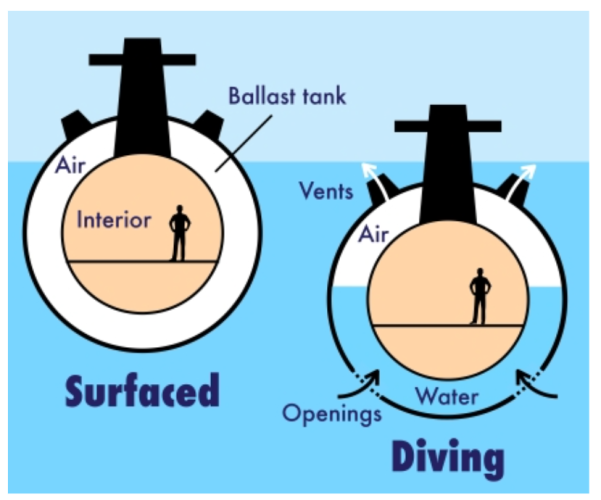Have you ever noticed that when you get into a bath, the water level rises?

That's because you are displacing the water in the bathtub with your body. Displacing liquids with objects is closely linked to the concept of upthrust, so let's learn more about displacement!
Archimedes was a Greek mathematician and scientist, born in 287 B.C. He worked across a wide range of scientific fields, and in one famous story, he was tasked with finding out if a gold crown was made of pure gold or not, as there was no way of finding the volume of this irregularly-shaped object. If the volume was known, the density of the object could be calculated, which would tell Archimedes if the crown was pure gold.
The story says that Archimedes got into a bath one day, and noticed the water rise.
"Eureka!" he cried out. He had realised that the volume of raised water must be equal to the volume of his body. The volume of the crown was found by placing it in a container of water. The change in volume was measured - this was the crown's volume.

Using the volume of the crown and the mass of the crown, Archimedes found its density and proved that it was not pure gold, as the density did not match.
While we can't be sure if the whole story is true as it happened so long ago, the principle can still be helpful to this day.
This stone is an irregular shape. We can't measure its volume directly.
.jpg)
Let's fill a measuring cylinder halfway.

The cylinder reads a volume of 50 cm3
The rock is placed into the water, and it sinks. The rock has displaced the water. The new volume of water is 67 cm3
What is the volume of the rock?

The volume of the rock is the difference between the initial volume and the new volume.
67 cm3 - 50 cm3 = 17 cm3
Let's learn about another example of water displacement and upthrust, and how it is useful. Have you ever thought about how submarines can sink deeper in water, or rise up, on command?

Submarines, like any object in a liquid, experience two main forces - their weight acting downward and upthrust acting upward. If the upthrust is less than the weight of the submarine, the submarine will sink.
The ballast tank of a submarine, when on the surface, is filled with air. This means that the overall density of the submarine is less than the density of the water and that the weight of the submarine is not greater than the upthrust.
When the submarine dives, the ballast tanks open up and they gradually fill with water. The weight of the submarine increases, and because the weight is greater than the upthrust, the submarine begins to sink.
The tanks can fill with water, but if the submarine is deep underwater and needs to surface, compressed air from stored tanks in the submarine can get pumped into the ballast tanks. This decreases the weight of the submarine, and the upthrust on the submarine causes it to move up towards the surface of the water.
Now let's try some questions!








